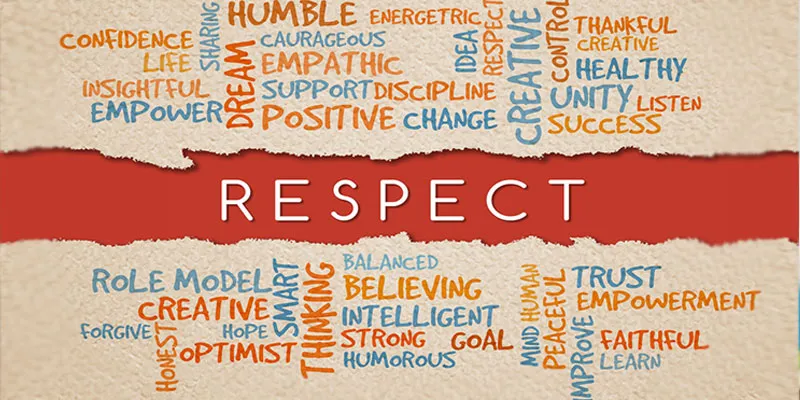‘Be a bee’–nine steps to promote grassroots innovations in India, by Anil Gupta
What kinds of innovation are emerging in rural India, and can they be documented and harnessed across the country? How can the corporate and government sectors support such grassroots innovation–and how can volunteers get involved?

Many of these challenges and approaches are analysed in the book Grassroots Innovation: Minds on the Margin are not Marginal Minds, by Anil Gupta, professor at IIM Ahmedabad. The 381-page book is spread across eight chapters, with 40 colour photos and 25 pages of references and notes.
The context of the book is the ‘shodyatras’ or innovation-seeking journeys conducted by the author through villages in the summer and winter. Dozens of these journeys have been conducted from 1998 onwards, revealing a wealth of insights into innovation types, processes and diffusion.
Such knowledge journeys or bridges are also places where ‘learning, living and loving intersect,’ according to Gupta. More such rural engagement mechanisms need to be explored to harness and honour grassroots creativity.
Here are my nine key takeaways for social entrepreneurs, innovators, and researchers from this insightful book; see also my reviews of the related books Lean Startups for Social Change, Scaling Up, Designing for Tomorrow’s World, and Recasting India.
Keep your eyes and ears–and minds–open to new ideas and acute problems
“Diversity is the essence of inclusiveness and creativity,” says Gupta. Quantity as well as quality of innovative ideas are important. Long-term experience should not come in the way of listening to new ideas and questioning the status quo. New perspectives are needed in seeing, observing, abstracting, labeling, clustering, understanding, and assimilating.
In terms of priority, it is important to focus on solutions for the most acute problems, e.g., challenges faced by rural women in rice cultivation, and their exclusion from carpentry and blacksmithing. Many innovation programmes tend to focus on working professionals, but creative idea flow should be encouraged from students and children as well.

Build innovation platforms
There are thousands of innovative ideas across the country, and hundreds of projects in pilot stage. Connect them through offline activities and online platforms. Examples discussed in the book include Grassroots Innovation Augmentation Network (GIAN was founded in 1997 to convert grassroots innovations into viable products), National Innovation Foundation (NIF was founded in 2000 to support traditional knowledge holders from the unorganised sector), and GTIAF (Grassroots Technological Innovation Acquisition Fund).
Other examples include Techpedia from SRISTI, a platform connecting grassroots innovators with real-world problems. It also conducts workshops and summer camps, and gives awards to creative communities. In addition to such platforms, regular community activities like trade fairs and innovation competitions along with media coverage and site visits help promote such ideas.
Institutionalise strategies for innovation
“Quality and dynamic standards are at the heart of a sustainable future,” says Gupta. While much has been written about the rapid pace of innovation and the need for open-source standards, it is also important to have skilling programmes and standards bodies.
Institutions studying and promoting grassroots innovation in India must provide ‘freedom, flexibility and fellowship.’ Examples in this regard include the approaches used by Society for Research and Initiatives for Technologies and Institutions (SRISTI), GIAN and NIF.
Document and celebrate the stories of innovators
There are thousands of unsung innovators in India, many of whom have shared their traditional and creative knowledge with no expectation of return. Their stories should be documented and celebrated, and they should receive recognition and opportunities for further co-creation. A ‘village knowledge management system’ is needed to document these innovation processes, creators, influencers and impacts. They apply to individual solutions, extracted heuristics, cross-sectoral ‘metaphorical’ applications, and even broader worldviews.
For example, Mehtar Hussain and Mustaq Ahmed developed a bamboo windmill to pump water in paddy fields in Assam. GIAN helped extend its application in the form of an iron windmill for salt farms in Gujarat.
Some farmers grow okra around cotton fields as a way of pest control. Others remove some tomato plants and hang them upside down so that they ripen slower and can be sold after the main crop is done.
Sometimes, farmers may have found solutions but without clear frameworks to explain how or why they function. Heuristics and research partnerships help in this regard, and some level of ‘fuzziness’ in solutions should be accepted. “Reciprocal, responsible, and respectful bridges between the formal and informal sector need to be built,” Gupta advises.
Ecosystem learning: tap domain and customer knowledge
While much attention tends to focus on agricultural produce, products and processes, there are also lots of insights that farmers have about their customers. This includes growing crops which customers prefer, and knowing how to market them.
For example, some varieties of rice swell more than others and are therefore preferred by consumers because they give a longer feeling of fullness in the belly. Other farmers have perfected techniques of growing tubers of differing thickness based on customer preferences. Some farmers put dung on jute sticks, which can be used to regulate the quantity of flame heat by positioning them proportionately.
The four teachers that we can learn from and be influenced by are ‘teachers within, teachers among peers, the teacher in nature, and the teacher among common people.’ Scaling up grassroots innovation involves not just scientists and farmers but designers, artists, entrepreneurs and investors.

Build a foundation of ethics
Much has been written about intellectual capital (IP, commons) and social capital (trust, reciprocity)but there also needs to be a focus on natural capital (resources) and ethical capital (internal regulation), urges Gupta. Embrace empathy, humility, harmony and creativity. Collaboration should be based on compassion and inclusion, and individual creators as well community cooperatives should be encouraged. Tap the goodwill of volunteers and actively cultivate their support. Overcome the inertia typical at early stages of facing insurmountable problems.
“Impatience with change, a hunger for ideas, a bias for action, and respect for creative ideas constitute some of the elements of an inclusive innovation culture,” explains Gupta. “Feelings are bridges that connect knowledge and action,” he observes, but for many people inertia and impatience can come in the way of translating feelings into appropriate actions.
Don’t just learn from users–co-create with them
Problem finding, solution discovery, and product creation should not be one-way streets, but two-way flows connecting local communities with development groups. Village knowledge systems can be a source of new ideas, but can also be fortified with a steady flow of inputs and collaborative experiments. Volunteers too play an important part in creating intermediary knowledge assets along the journey, e.g., The Honey Bee Newsletter.
Poor people should not be treated as ‘a sink for aid, assistance and advice’ but as a source of ideas, innovations and enterprises.’ Tribal communities have been excluded by markets and states, but have a lot of traditional knowledge that can be useful for value-added herbal products. Inter-disciplinary fab-labs and DIY hubs can play an important role here.
“Open innovation systems must become reciprocal,” urges Gupta. Creativity and innovation can come from people of all economic strata, in contradiction to Maslow’s hierarchy of needs. Gupta shares a number of examples of artwork he came across even among poorer communities.

Embrace frugality–but not just jugaad
“Frugality requires affordability, circularity and durability, or renewability,” says Gupta. “Many uses are discovered serendipitously as a part of fun and frolic,” he adds. For example, used plane tyres are being converted into camel cart tyres in Rajasthan. In Meghalaya, there are bridges made from roots.
Windmills have been made from bamboo and not metal parts. Some farmers use lemon juice in multi-functional ways, e.g., as a pesticide instead of costly chemicals. Cassette tape motors have also been used to scatter seeds in fields.
Solutions which are ‘good enough’ rather than ‘good in every possible situation’ are a sufficient start. Design improvements should be done only after validation and value addition. Reusability and component-based solutions are important principles of frugality in the circular economy. Dealing with uncertainty is also part of the process. “Maximising uncertainty makes new discoveries possible,” says Gupta. Even imperfect beginnings can lead to eventual success.
Frugal and green innovations are the need of the hour, but that does not mean jugaad is the answer. Makeshift jugaad solutions are only temporary fixes, and long-term systematic development based on quality, precision and standards should be followed. (See also my reviews of the books Frugal Innovation and Jugaad Innovation.)
Promote micro-venture finance
While much has been written about micro-finance and venture capital, the need of the hour is also micro-venture finance to assess small untested ideas. Grassroots rural innovation is not attracting as much attention as urban digital startups.
Through the initiatives described in the book and covered in the media, more than 200,000 ideas have been received from 550 districts, 70 technologies have been commercialised, 700 patents have been filed, and 10,000 innovations placed in the public domain.
“Every drop counts, every support matters for overcoming our inertia and encouraging inclusive innovation at all levels in society. So, be a bee,” sums up Gupta.
About the author:
Anil K Gupta is a professor at the Centre for Management in Agriculture, Indian Institute of Management, Ahmedabad. He is also the founder of Honey Bee Network, and facilitates the annual Festival of Innovation (FOIN) through the National Innovation Foundation. He is the winner of the Humanistic Management Lifetime Achievement Award by the Humanistic Management Network, and organiser of the annual Shodhyatra (‘learning walk’ to connect with local innovators and document their work).












